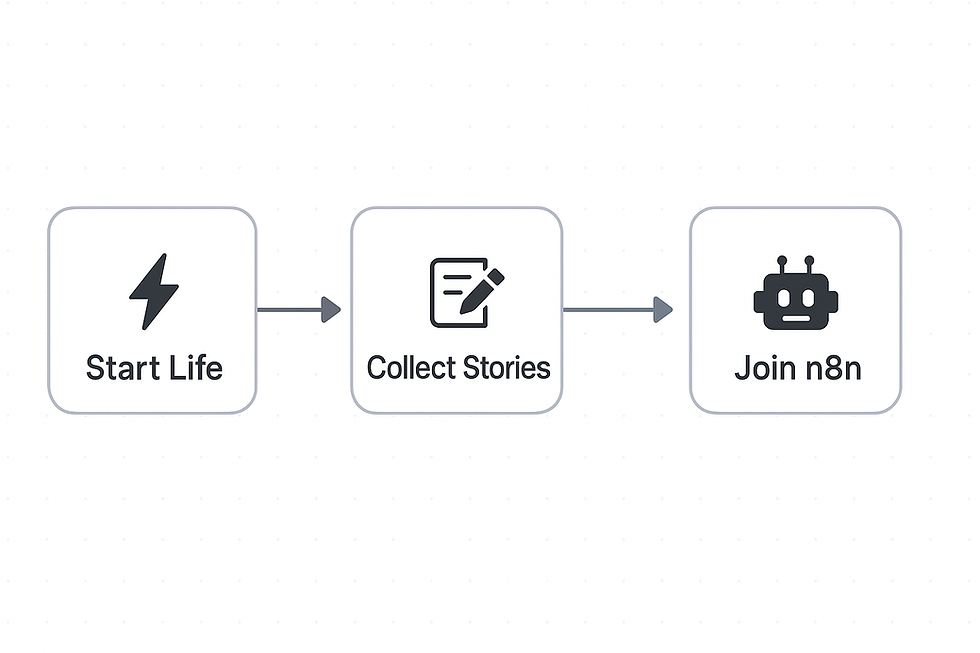n8n User Needs Using External Research
- Harshal

- 6 days ago
- 3 min read
Problem Discovery Deep-Dive Example For PM Interviews
Here, I show a deep dive into a product memo example I did for n8n a few months ago, when I interviewed with them. Fast-forward, I got a job offer and will join them in Q4 2025. Since this doesn’t have n8n employee inputs, the information is not accurate, but I hope it gives you ideas on the approach.
In earlier posts, I shared a framework to write a case study or product memo when you interview for Product Management roles with companies.
Based on my n8n user interviews, community discussion analysis, competitive analysis, and trying out n8n and competitor products, I identified user needs.
I grouped them into themes and wrote them in descending priority order here.
Some might’ve been implemented by the time you read this, so these opportunities may not exist anymore. My goal here is to show you a deep-dive example for your Product Management interviews.

Related:
Customer Journey Map
To understand user needs, I created a simple customer journey map:

1 - Builder Confidence & Debugging Control
Users want a reliable way to prototype, test, and troubleshoot AI workflows with precision.
Sub-needs:
Clear, quantitative evaluation of prompt/model effectiveness.
Version tracking of workflows, prompts, and model behavior.
Safe test/staging environments to validate before going live.
One-click debugging tools to trace data paths and node errors.
Predictive UI helpers to reduce trial-and-error (e.g., smart suggestions when linking nodes or writing expressions).
Rate limits e.g., with memory or OpenAI
Prompt playground
A common mistake is forgetting to attach the model, which causes the “Chat Model must be connected” error. So, if an AI Agent node is added, automatically prompt the user to add a Chat Model sub-node (maybe a pop-up saying “Choose an LLM for this agent”)
Pain Points:
Hard-to-diagnose failures and poor error clarity.
High time-to-value for non-trivial workflows.
The expression editor is seen as powerful but intimidating.
2 - Integration Flexibility & Orchestration Power
Users rely on n8n for complex automation across diverse systems. They want modular, low-friction ways to compose AI + APIs + memory.
Sub-needs:
Plug-and-play support for multiple AI providers (e.g. Gemini, Claude, Grok).
Dynamic model selection, memory sharing, and chaining logic.
Better schema validation and dynamic input/output mapping.
Support for model orchestration patterns (e.g. multi-agent, V2V flows).
Streaming flexibility for chatbots.
Whisper native node
Templates that are based on harvard’s study of top chatGPT use-cases
Pain Points:
AI agent struggles with schema mismatches and tool invocation.
Memory/context not preserved across steps.
Debugging subflows or loops with agents is painful.
Model-specific config is brittle or undocumented.
3 - Production-Readiness & Reliability
Teams want to go beyond experiments and confidently deploy n8n-powered systems.
Sub-needs:
Observability: monitoring, logging, performance metrics.
Cost and token usage visibility for AI nodes.
Fallbacks and safety nets for failed tool calls.
Seamless cloud vs self-host parity in features.
Pain Points:
Workflows break silently (e.g., tool call fails with no output).
Self-hosted users report missing features or setup friction.
OAuth config and credentialing are multi-step and error-prone.
Rest Of The Product Memo
You can read rest of the product memo here.
Related:









